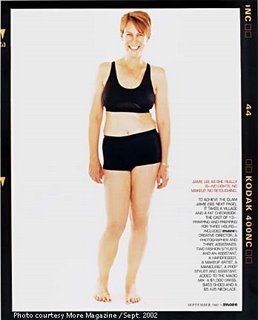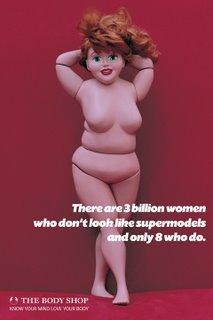By
Kelly NaultIs it really true that teenage girls + media = low self-esteem?
The issue of media's impact on teenagers has generated a lot of interest in the last decade. Despite contradictory findings, all researchers agree that teenage girls as a group are focused on their looks—especially on what they don’t like about themselves! Marketing departments and ad agencies spend millions each year targeting teenage girls who spend much of their hard-earned dollars (and their parents’ hard-earned dollars!) on looking good. Although the message of “girl power” is prevalent in today's marketing messages, so is the irrefutable idea that “sexy” and “thin” are in!
The dieting industry alone generates 40 billion dollars per year in America. If you believe diets are just for adults, you will be shocked to learn that a Harvard study (Fat Talk, Harvard University Press) published in 2000 revealed that 86% of teenage girls are on a diet or believe they should be on one. Diets are common among both teens and children. According to the National Eating Disorders Association, 51% of 9 and 10-year-old girls actually feel better about themselves when on a diet. As a society, our obsession with thin is relatively new. Most people (especially teens) are shocked to find that sex icon Marilyn Monroe actually wore a size 14!
But pick up a fashion magazine today and you'll find models who are thinner than 98% of all the girls and women in America. Turn on a television and see 'sexy' celebrities such as Shania Twain, Britney Spears and Pamela Anderson baring their flesh. It is these role models who have become the standard of what is in vogue in the twenty-first century.
Do Teenage Girls have Low Self-esteem because of Media?
One of the most fascinating shows on self-image for teens was aired on Discovery Channel’s “Sex Files” program (Episode 12: Girl Power). During the show, they reported on eating disorders on the island of Fiji. In 1995, this tropical paradise had only 3 percent of girls with eating disorders in 1995.
Then western television programs were introduced, including “hits” such as ER, Melrose Place and Xena: Warrior Princess. Three years later, the eating disorders in girls on the island rose to 15%. A surprising follow-up study reported 74% of Fijian girls feeling “too fat or big” and 62% had dieted in the last month—surprising in a culture that typically upholds curvaceous women as beautiful.
Five Ways to Ensure Media Does Not Contribute To Low Self-esteem in Teenage Girls
Fortunately, parents have a huge impact on a teenage girl’s self-esteem—more so than even the media. Thus, there is much we as parents can do to ensure our teenage girls' self-esteem soars! Here are five helpful parenting tips:
1. Encourage and Support Your Daughter’s Achievements and Passions. Focus on what it is that your teenage daughter is good at. If she enjoys math, animals or singing, support her. Acknowledge the presence of pretty girls in the media with, “Obviously outward beauty is one of her gifts. You’ve got many gifts yourself!” Then name these gifts as well as you can.
2. Help your Daughter Get in Touch with Reality. We are bombarded with perfect idealized models of what a woman should look like. But the fact is less than 1% of the girls out there will ever become a super model. Besides, no one can compete with computer airbrushing! Share these facts with your daughter. And please note that if you are complaining about your own “thunder thighs”, this message is going straight to your daughter’s heart. Make a commitment to raise your own self-image. No one, including you, is perfect. It is our imperfections that actually make us human. Having the courage to be imperfect makes our life easier and much more joyful.
3. Focus on a Healthy Lifestyle – The less junk food you keep around the house, the less you and your family will eat it! Do you and your family a favor—stock up on the healthy stuff and refrain from insisting on second helpings. If the scale in your home is a bit of an obsession, consider tossing it out. Instead focus on how well and how healthy each of you feels instead.
4. Contribute to Others – Our preoccupation with our own weight can be positively transformed when we start focusing on others. Volunteerism boosts self-esteem. Volunteer as a family, bring a smile to others, and you'll all be reminded of how truly fortunate you are.
5. Encourage Dad to Pay Attention in a Positive Way – Help Dad understand how detrimental well intentioned teasing about weight or looks can be. Encourage him to spend time with his daughter focusing on all the things that she is great at.
It is sad that many teenage girls and women believe that they need to be someone other than who they truly are. It is time to come clean for ourselves, for the race of woman and for our children, by beginning to love the person we are—flaws and all. Embracing our imperfection gives us the opportunity to see all the awesome things about ourselves: to acknowledge that we do have nice eyes, nice breasts, nice legs, nice whatever! And as we stop hiding our flaws, suddenly our psychological zits will become the beauty marks that make us stand out from the crowd.
Kelly Nault, MA author of When You’re About To Go Off The Deep End, Don’t Take Your Kids With You inspires moms to put themselves first—for the sake of their children. She shares time-tested tools that motivate children to want to be well behaved, responsible and happy! Sign up for her free online parenting course here.
You are free to print or publish this article provided the article and bio remain as written and include a link to http://www.mommymoments.com as above.
© 2005 UltimateParent.com - All rights reserved.
Article Source: http://EzineArticles.com/?expert=Kelly_Nault







